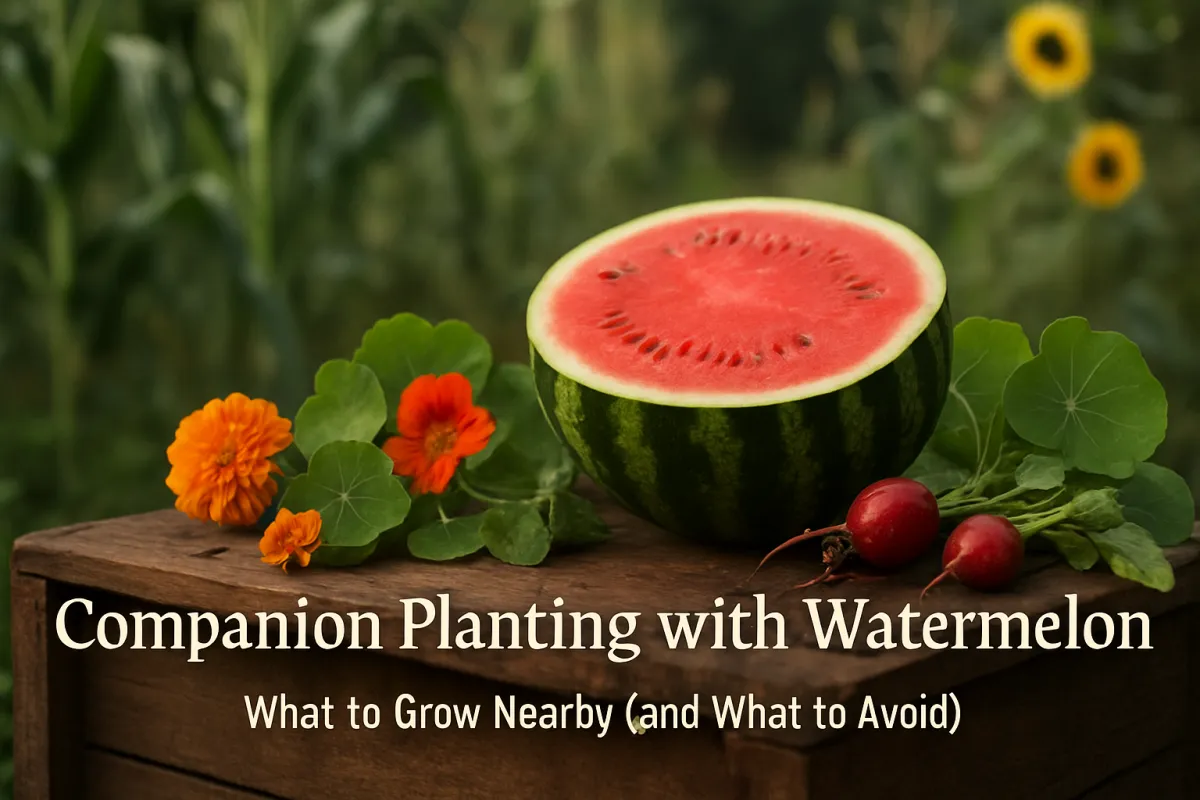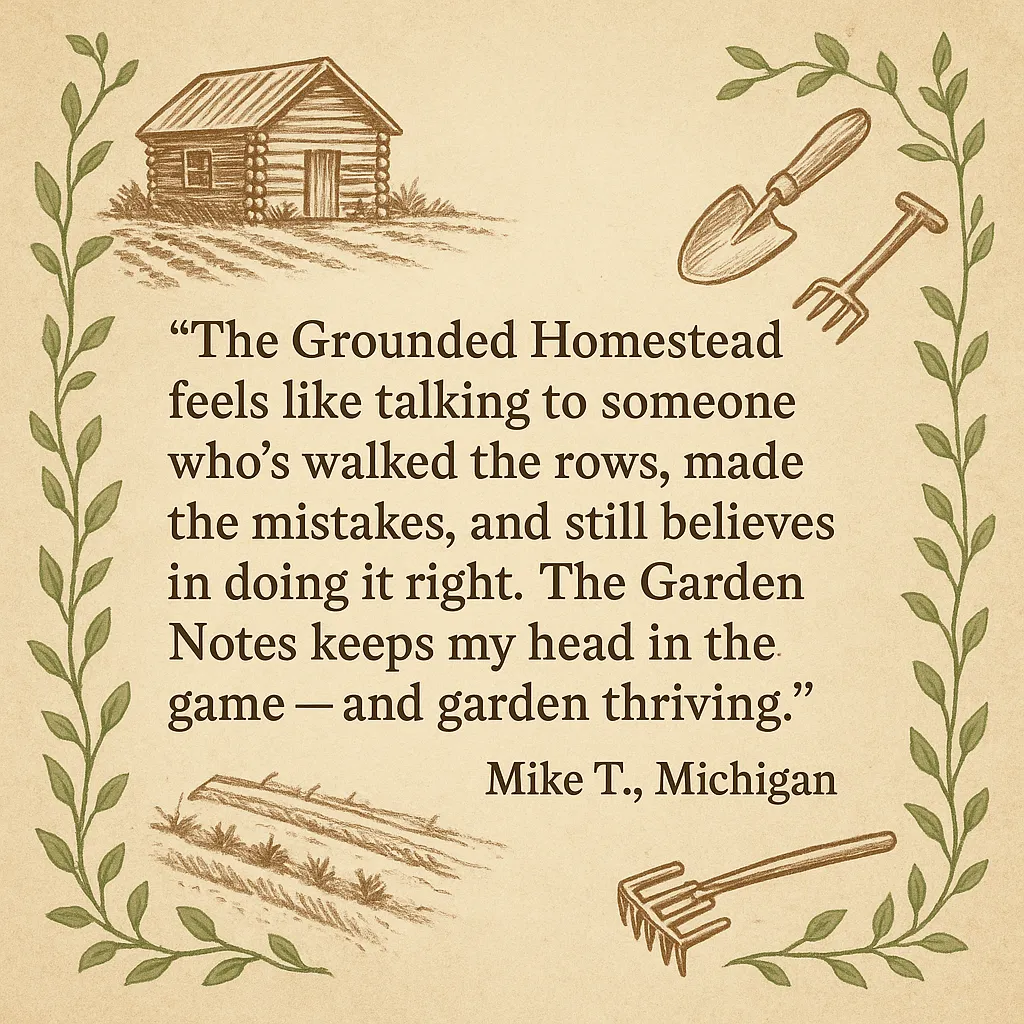
Companion Planting with Watermelon: What to Grow Nearby (and What to Avoid)
Companion Planting with Watermelon: What to Grow Nearby (and What to Avoid)
A lesson from my first watermelon patch
I’ll never forget the first summer I tried growing watermelon on my own. I was green — more stubborn than wise. Thought if I gave those seedlings enough sun and water, nature would handle the rest. Instead, cucumber beetles handled them, the vines wilted, and I was left scratching my head.
That evening, I remember Grandma shaking her head. “You can’t just toss plants anywhere and expect them to behave. Good neighbors matter in the garden same as they do anywhere else.” Turns out, she was right. Companion planting isn’t just old folk talk — it’s a real, time-tested way to protect your crops, improve your soil, and get more from each square foot.
If you’re planting watermelon this season, here’s how to stack the deck in your favor.
Why companion planting matters for watermelon
Watermelon is a hungry, thirsty, rambling crop. It sprawls out and looks for nutrients and space. When you pick the right neighbors, you cut down on pests, attract more pollinators, keep diseases at bay, and make better use of your precious garden ground.
Plus, you keep a few more dollars in your pocket — less spent on sprays, treatments, and store-bought produce. Every melon you grow is one you don’t have to buy from a system you may not trust. That’s independence right there, one vine at a time.
Start with healthy soil (Grandma’s rule #1)
Before you even think about what goes next to your watermelon, think about what’s underneath it. Watermelon is a heavy feeder — it wants deep, loose, nutrient-rich soil. Work in aged manure or compost a couple weeks before planting.
Grandma used to say, “If the dirt crumbles easy in your hand, your melons will be happy.” If your soil’s tight, clumpy, or starved, even the best companions won’t save it.
The best companions for watermelon
Here’s what I’ve found works time and again.
🌱 Radish: The early bodyguard
Radishes germinate fast and mature in about 25 days, long before your watermelon really takes off. They act like little decoys for cucumber beetles. Plant them along the edges or right between your watermelon hills. As soon as they’re ready to harvest, pull them — it clears space for those watermelon vines to run.
🌸 Nasturtium: The cheerful trap crop
Nasturtium does double duty. It pulls aphids and some beetles away from your watermelon, and it calls in bees with bright blooms. More pollinators means more fruit. Let it ramble near your watermelon patch — just keep an eye so it doesn’t choke out young vines. If it gets thick, snip it back.
🌼 Marigold: The silent protector
Old standby for a reason. Marigolds help repel nematodes and a slew of chewing insects. Their scent tends to confuse pests, steering them elsewhere. Tuck marigolds on the outer edges of your watermelon bed.
💧 A quick watering note
Remember: radish and nasturtium are shallow-rooted, watermelon roots dig deep. Water slow and long to make sure moisture soaks down. Don’t let your watering get stingy just because the companions look satisfied — your melon needs it deeper.
The good neighbors: tall friends for shelter
🌽 Corn & 🌻 Sunflowers
Corn and sunflowers are like friendly giants. Planted on the north or west side of your watermelon bed, they’ll cut harsh wind and give partial afternoon shade. That keeps vines from baking in brutal midsummer sun, especially in the southern states.
They also pull in pollinators. Bees working sunflowers are likely to hop over to watermelon blooms too, boosting your fruit set.
Just don’t plant so dense you rob your watermelon of essential direct light — think gentle dapple, not full shadow.
What NOT to plant near watermelon
❌ Potatoes and other heavy feeders
Potatoes fight watermelon for the same nutrients, especially nitrogen and potassium. They’re also prone to fungal diseases that could spread into your patch.
While we’re at it, keep an eye on close cucurbit cousins like pumpkins or certain squashes. Too many in the same spot can ramp up pest pressure — cucumber beetles and squash bugs will throw a party you didn’t invite.
How to set up multi-crop rows or edges
Here’s a simple blueprint that’s worked well for me:
Watermelon hills: space plants 3–4 feet apart, rows 6–8 feet apart.
Edge planting: sow radish and nasturtium right at the row edges.
Marigolds: drop them in small clusters every 4–6 feet along the outer line.
Tall companions: plant a row of corn or sunflowers on the north or west side (depending on your hottest sun direction).
🌿 Don’t skip the thinning
If nasturtium starts taking over or humidity stays trapped under dense foliage, you’re risking powdery mildew. Thin it. Watermelon vines need airflow just like lungs need fresh air.
Succession planting: keep it moving
As soon as your radishes are ready, pull them and enjoy. This clears space for the watermelon to roam. Nasturtiums and marigolds keep going — they’re long-haulers.
Quick reference snapshot
✅ Plant near watermelon:
Radish (disrupts beetles)
Nasturtium (traps aphids, lures bees)
Marigold (repels nematodes, pests)
Corn & sunflowers (partial shade, pollinator draw)
❌ Avoid nearby:
Potatoes, carrots, heavy nitrogen feeders
Dense plantings of squash or pumpkin if you already have bug pressure
Snap a pic of this list and take it right to your patch.
Build a resilient patch
Grandma always said the garden will teach you something new every season. Pay attention. Watch what thrives together and what struggles. Don’t be afraid to experiment — this is how you get better each year.
And remember, every healthy watermelon you pick is more than sweet juice on a hot day. It’s one less mile on a semi truck, one less box from the store, one more meal that you truly grew.


Facebook
Instagram
X
Youtube